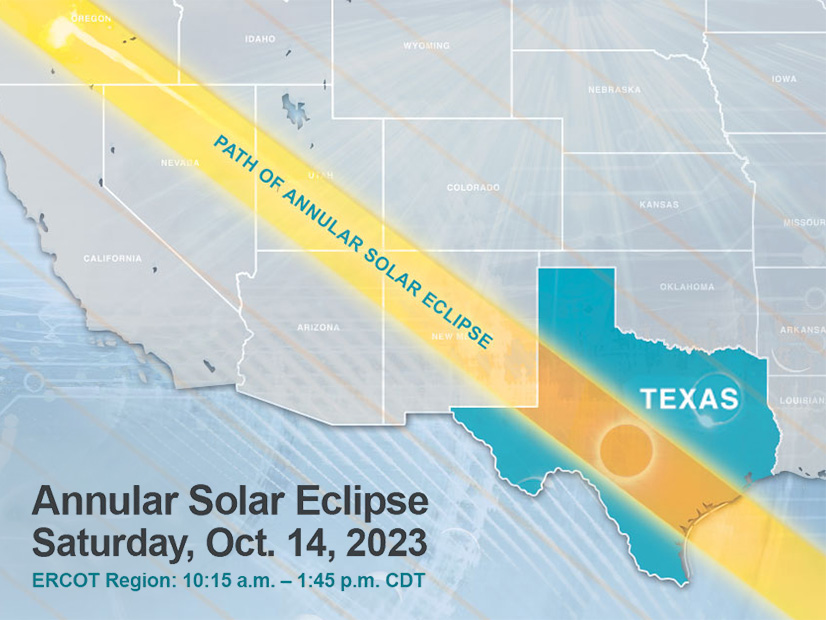ERCOT says it expects normal grid conditions during Saturday’s solar eclipse when solar resources, the grid operator’s workhorses this past summer during tight afternoon hours, will see their output reduced.
Staff have been looking ahead for months to an annular solar eclipse that will cross ERCOT’s region between 10:15 a.m. and 1:45 p.m. (CT). They say a maximum coverage of sun ranging from 76% to 90% will affect solar farms, with “clear-sky capability” reduced to at least 13% during the eclipse’s peak at 11:50 a.m.
The eclipse will traverse Texas diagonally, from the state’s northwest corner to the Gulf Coast. Its path includes San Antonio, Corpus Christi, several smaller cities and swaths of barren land with solar farms.
ERCOT has more than 17 GW of utility-scale installed solar capacity that has accounted for as much as a third of the grid’s fuel mix (April) and produced a record 13.7 GW of energy (Sept. 1). It has been credited with filling production gaps during a summer that saw the grid operator set multiple demand records. (See ERCOT Sets New Demand Mark, Will be Short-lived.)
The ISO has been working with solar forecast vendors to ensure the models account for the eclipse. It said it will prepare the system as necessary to meet the down and up solar ramps and use ancillary services for additional balancing needs.
An annular solar eclipse occurs when the Moon, at or near its farthest point from Earth, passes between our planet and the sun. Because the moon does not cover the sun’s entire disc, sunlight surrounds the moon’s shadow and creates a “ring of fire” effect.
The event is a prelude to next year’s total solar eclipse on April 8. That eclipse will cross over Texas from Mexico and continue into Canada and will be the last eclipse visible in the continental U.S. until 2044.



